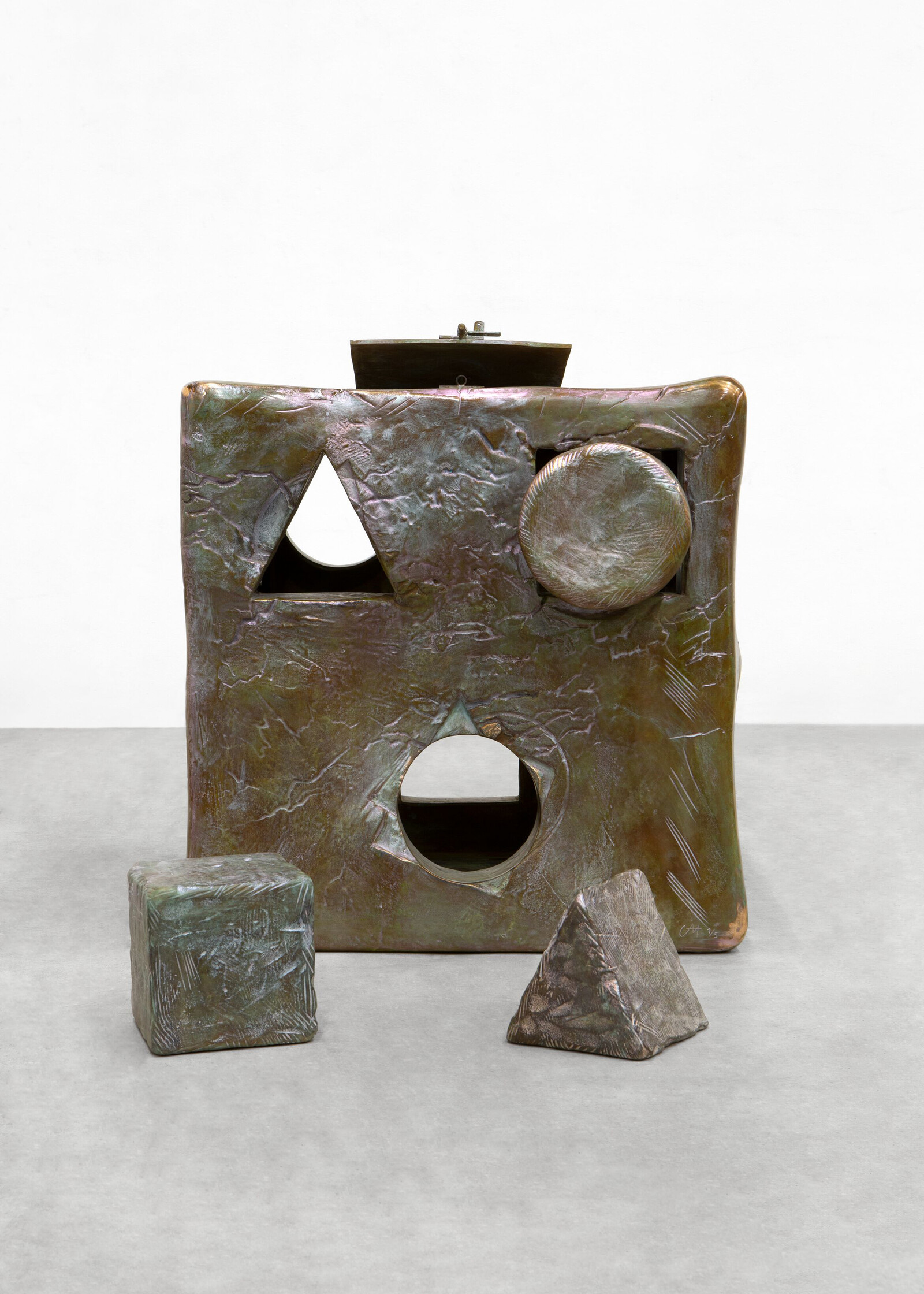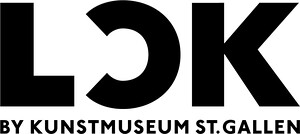Sweet Days of Discipline
June 10–November 5, 2023
Camille Henrot’s (b. 1978, Paris, France) first solo exhibition in Switzerland, Sweet Days of Discipline, features a large-scale installation of over 30 works made in bronze, aluminum, steel wool, wax and reflective fabric—with many created specifically for the show.
The installation is organized like a playground of sorts; a site of diversion, care, abandon, detritus and pending chores. Central to the installation are the symbols, figures, and emblems of delegated care in our lives: from the nanny, the dogwalker, the kindergarten teacher, the babysitter, to more abstract notions of time management, such as the calendar, the contract, and other administrative documents. The space at LOK by Kunstmuseum St. Gallen is transformed into a heterotopia—a space functioning within its own rules and regulations—where there is a simultaneous potential for both play and danger, attention and forgetfulness.
The exhibition borrows its title from Swiss-Italian author Fleur Jaeggy’s (b. 1940, Zurich, Switzerland) novel of the same name. Its themes related to coming of age and alienation are felt throughout the installation. For Henrot, the sweet days of discipline are not only experienced by those growing and learning, but also by those attending to, teaching and caring for them. Henrot’s installation represents a landscape rather than a utopia: “I want to acknowledge how care is—beyond being an essential, generative, precious act of love and attention—is also an ambivalent, entangled and messy act at times,” states Henrot.
Henrot’s meditation on the relationship between caregivers and their dependents is playfully represented by over a dozen sculptures of dogs. Situated at the entrance of the exhibition in a range of materials including steel wool, papier maché, wax, and sheet aluminum, it’s unclear whether the dogs are guarding the entrance like Cerberus or waiting patiently for their owner to return. For Henrot, dogs represent the concept of attachment (literally, on a leash), the history of domestication, as well as the ambivalence between caregiver and receiver (who is really being cared for?).
Throughout the years, Henrot’s representations of bodies in sculpture have been characteristically hybrid—neither human nor machine nor plant nor animal, nor gendered. Though care work takes on many forms, Henrot acknowledges it has been overwhelmingly performed by women and marginalized groups throughout history. With Sweet Days of Discipline the figures also straddle boundaries of age. They are observers and attention givers who are themselves being surveilled. They labor for the sake of others but are deeply attuned to their own capacity for detachment. Maternelle (2023) is a monolith: grounded (or perhaps stuck) by the sheer strength required to support the weight of caregiving. En sortant de l’école (2023) portrays two giant legs made of bronze, being followed clumsily by a group of kindergarten children. My Nanny (2023) portrays the caregiver as a seductive object of spectacle, yet she is not fully seen and, ultimately, tied to the interdependent relationship that she is tasked with.
The artist raises questions not only about the figures, but the many symbols of parenting and responsibility in our modern age: “I very much embrace the idea that the parent is not just the person who is raising the child, but is rather a multiplicitous, fluid, and complicated realm of people, ideas, tasks and objects in our lives. I’m purposefully not including any representation of a parent in the exhibition because my idea is to give forms and importance to the parent’s many substitutes.” Iron Deficiency (2021) produced locally at Kunstgiesserei St. Gallen for the Liverpool Biennial, presents an ironing board emitting steam at randomized intervals, speaking to a feeling of depletion, absence and self resignation towards the act of caregiving.
Henrot also integrates the perspective of children in the exhibition. Misfits (2022) deviates from the typical children’s sorting cube toy, designed to teach children about shapes and colors. The cube’s cracks and dents suggest that someone previously attempted to force the wrong shape into the wrong hole. Hide & Seek (2023) represents a young child hiding under a blanket, playing the widely known game that teaches us about loss and trust—or perhaps defending its autonomy from the viewer.
Two large-scale works on fabric, titled Working Hours and Lorem Ipsum Dolor (2023), revolve around the tension between pleasure and pain in care work. For the first time, the artist used laser engravings on huge reflective fabric panels, featuring a collage of drawings, text fragments from administrative documents, personal photos and sketches. The encrypted quality of the fabric makes legibility dependent on the viewer’s position in space, reflecting the fragmented nature of our needs and responsibilities.
Interrupted Lullabies, a three channel sound installation (2023, 30 mins, loop) by Swiss composer and musician Mauro Hertig (b. 1989, Zurich, Switzerland) floods the exhibition space with hums and noises heard by a child in a state of hyperfocus: a dog scratching its ears, bees buzzing, a parent’s shush. Museum staff hum lullabies during weekend hours, and a newly composed work for choir will be performed in concert in the exhibition space on June 9, August 22, and November 5, 2023.
Curator: Nadia Veronese




